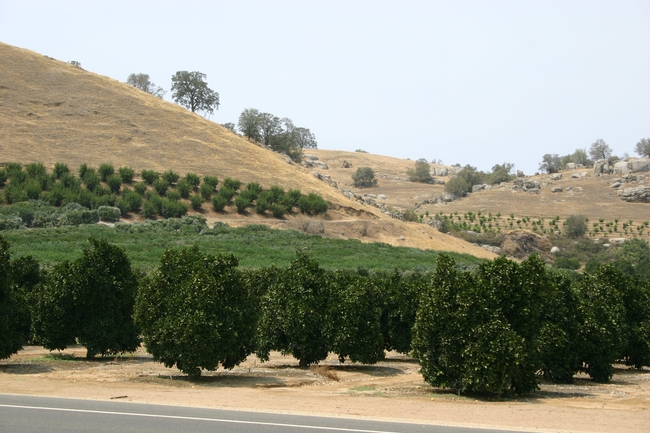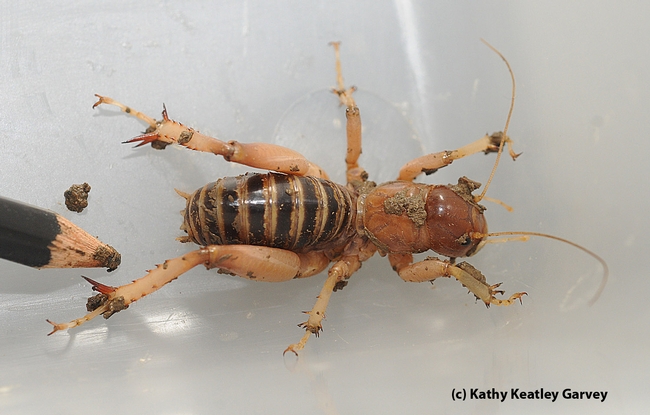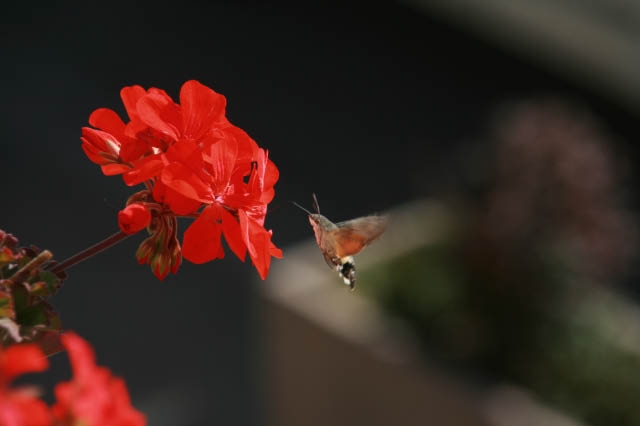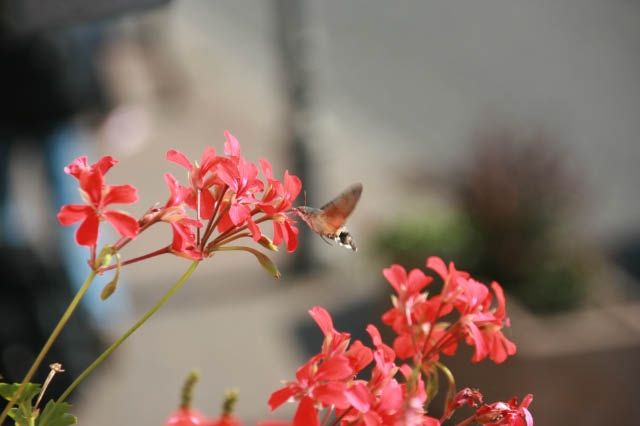UC Blogs
Two Asian citrus psyllids found in Tulare County
This week a quarantine goes into effect in some parts of Tulare County to stop the spread of Asian citrus psyllid, according to a 3-minute story on The California Report. The decision comes after officials found ACP in traps near Strathmore and Terra Bella. For an update on the pest and the disease it can carry, The California Report's Rachael Myrow spoke with Mark Hoddle, UC Cooperative Extension specialist in the Department of Entomology at UC Riverside.
Myrow asked why the effort to prevent movement of ACP has not been successful.
"It's very difficult to police the movement of all types of citrus plants in and out of infested areas," Hoddle said. "People may accidentally and unwittingly move plants that have Asian citrus psyllid on them out of infested areas in Southern California to uninfested areas. Another way these psyllids may move is they potentially have the ability to hitchhike on farm machinery or even vehicles."
Listen to the full interview here:

Some citrus orchards in Tulare County will have to comply with quarantine restrictions.
Strange Little Insect
It's a strange little insect. A reader likens it to "a cricket on steroids." A Van Nuys resident says she always wondered what they were. "I've...

A Jerusalem cricket. (Photo by Kathy Keatley Garvey)

Burrowing owls feed on Jerusalem crickets. (Photo by Kathy Keatley Garvey)
It's a Bird, It's a Plane!
One of the many special joys of gardening is coming face to face with hummingbirds. I love to watch them sip from flowers or just perch and survey their territory. That's why Keith and I were thrilled to see a tiny hummingbird sampling the flowers at a flower box at a restaurant in Rudesheim, Germany. He was the tiniest thing we had ever seen. He was brown and rust and white and hummed and hovered enchantingly.
I vaguely remembered that there was a hummingbird referred to as a bee hummingbird, so that evening I lhit the Internet. No, the bee hummingbird is from Cuba and is a striking blue color which this creature was not. As I researched I found that there are no hummingbirds in Europe, only the New World. Interestingly about two years ago they did find hummingbird fossils near Frankfurt Germany. I did find out there was a zoo near Rudesheim that had a hummingbird enclosure; perhaps one had escaped.
Then I found a question to a bird site where someone else had seen a small hummingbird in Germany. The expert gently suggested that they had perhaps seen a European hummingbird hawk moth, Macroglossum stellatarum. No Way! I was a biology major. I'm a Master Gardener for crying out loud. I'm not going to mistake a moth for a bird. Nevertheless I did Google the European hummingbird hawk moth and sure enough that was exactly what my husband and I saw. The moth flies during the day time, hovers and even has the hummm of the hummingbird. It's incredible. They say it's an example of convergent evolution that they have ended up so similar. Take a look at the pictures that my husband took and see if you would have been fooled too.

Macroglossum stellatarum. (photos by Keith Arrol)

Note the antennae, hummingbirds don't have these.

hummer moth
Farmers turning in greater numbers to mechanical harvesting
The dwindling supply of workers has created a new urgency for California farmers to employ mechanical harvesting technology, reported the San Luis Obispo Tribune.
Some cherry growers, for example, were able to pick only once this year, said Chuck Ingels, UC Cooperative Extension advisor in Sacramento County. Ideally, they'd pick as fruit colors and ripens.
"They're finding that if they can't get labor to pick their crops, they're just not able to farm anymore," Ingels said. "So what they're going to is mechanization."
UC Davis agriculture experts, farmers and industry leaders gathered last month in Orland to watch a demonstration of the first mechanical harvest of Manzanilla table olives in California. The new technology could revive the industry, the article said.
Even pear harvesting, a grueling job that requires workers to climb aluminum ladders with heavy bags of fruit, may be ripe for new harvest technology. For apples and pears, there are platforms for workers to stand on that move through the orchard while the workers feed the fruit into flexible tubes, where suction carries the fruit to bins.
"It's definitely on the radar for growers in the industry," Ingels said.
The new grid
Take a look at the nearest light switch: is it up or down? The answer means more than you think. When you flip a switch — or run a washing machine, or plug in a space heater — you’re creating demand. And on a vast, interconnected electrical grid like California’s, supply must always meet demand. Otherwise, it’s lights out.
For more than a century we’ve taken the balancing act between supply and demand for granted, and for the most part, it’s worked. To accommodate sudden spikes in demand, engineers overbuilt the grid with excess slack, including wires that were thicker than they needed to be and standby fossil-fuel power plants that could fire up at any instant.
But today our 19th-century grid is being inundated by 21st-century innovations — among them the remote, large-scale solar and wind plants that are leading the state toward its clean-energy future. California has added nearly 2,800 megawatts of renewable energy capacity this year, almost equal to what it gained in the previous 13 years combined, the California Public Utilities Commission reports. In response to the Global Warming Solutions Act, or AB 32, the state has required its three largest utilities to acquire at least 33 percent of their power from renewable sources by 2020, up from the current 21 percent. Some analysts — and utilities — are aiming for well over 40 percent.
These new energy sources fluctuate according to nature’s whims and can’t be switched on at a moment’s notice. The more we rely on solar and wind to replace steady sources like fossil fuels, the less slack remains in the system, and the smaller the margin gets between peak supply and peak demand.
“Renewables integration into the grid poses a fundamentally new problem,” says Sascha von Meier, co-director of electric grid research for the California Institute for Energy and Environment. In various ways, von Meier says, the solar and wind energy that most of us in California are clamoring for — or already installing on our rooftops — is slowly transforming the system through which we deliver and receive power. And we’re not entirely sure what to do about it.
Many of the state’s top energy thinkers — including researchers at UC Berkeley’s Energy and Resources Group (ERG) and College of Natural Resources, and their graduates now employed within the industry — are working to find an answer. In the end, it’s clear that no single approach will do; rather, a blend of public policies, technological innovations, energy-storage solutions, and increased flexibility on the demand side (that means you and me) will work together to help California reach its clean-energy goals and push well beyond them.
—Excerpted from an article in the fall 2012 issue of Breakthroughs Magazine. Read the complete article.



